Talk Story with John Starmer
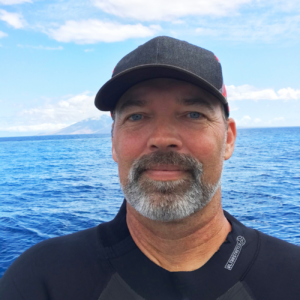 John Starmer is the Science Director of MNMRC and has been a part of the organization for 3 years. Here, John shares more about MNMRC’s diving program and how limu (algae) can be indicators of environmental health along Maui’s coastlines.
John Starmer is the Science Director of MNMRC and has been a part of the organization for 3 years. Here, John shares more about MNMRC’s diving program and how limu (algae) can be indicators of environmental health along Maui’s coastlines.
How did you first become involved with MNMRC?
I started as a volunteer, helping with some new technology MNMRC had acquired. Eventually, that led to a part-time role, and I’ve been here full-time for the past three years. My background is in coral reef ecology and conservation. After getting my Master’s degree at the University of Guam and a brief stint as a research biologist in Palau, I spent a decade in Saipan working for the coastal zone program to build a coral reef monitoring program for the CNMI, an effort supported by the US Coral Reef Initiative. During that time, I co-founded a non-profit that allowed me to support other NGOs and local governments in developing coral reef monitoring and marine protected area programs across Micronesia and in American Samoa. I eventually left that position to pursue my PhD at the University of Florida.
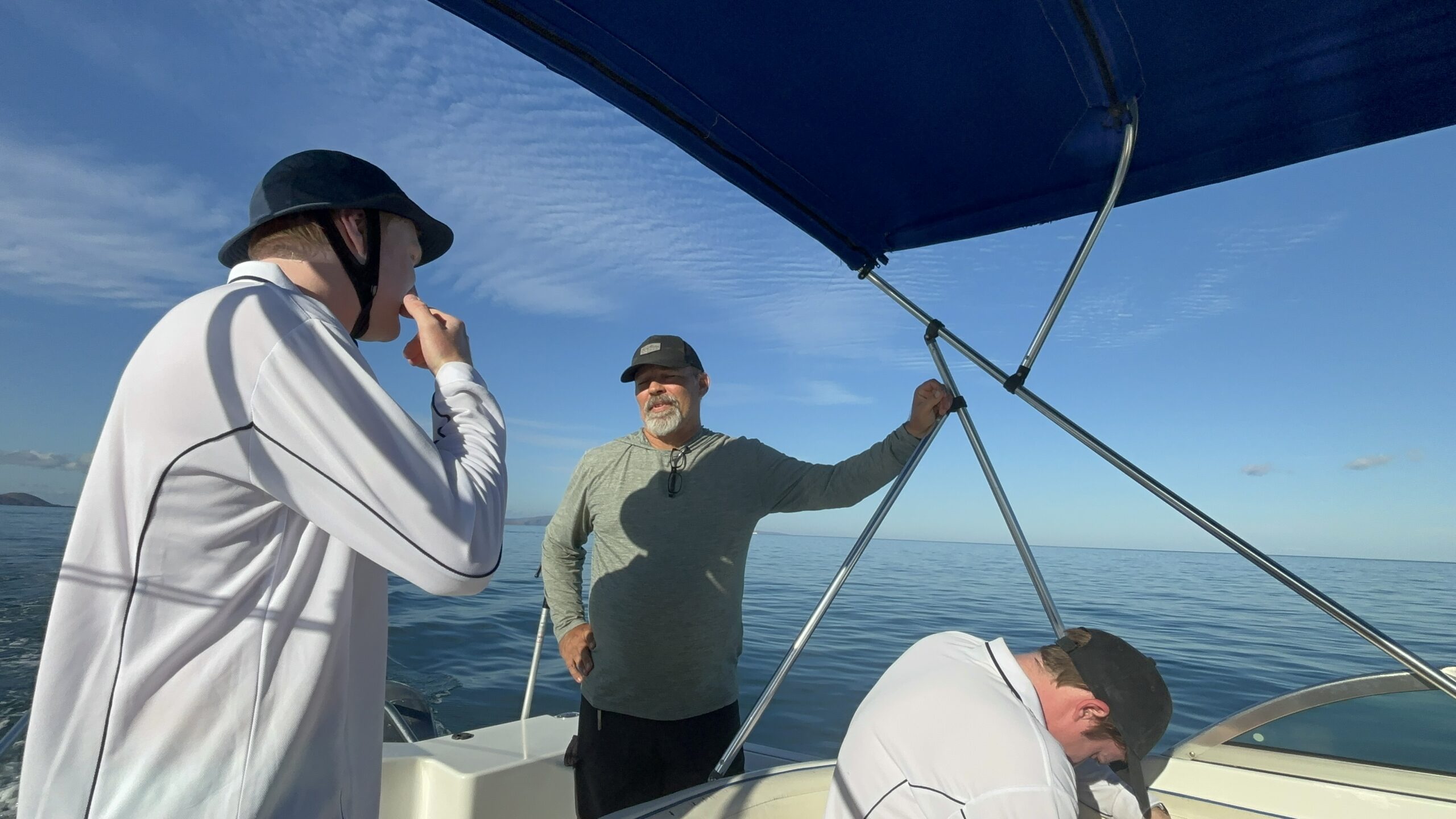
John talks with a member of the Flying Fish Technologies Team during their resurvey of South and West Maui reefs in August 2024.
What initially drew you to environmental science?
From as far back as I can remember, a connection with the intricacies of nature on land and sea was always part of my experience. I spent a lot of time around the ocean up and down the Atlantic coast as a kid, from Maine to the Carolinas to Florida. I can blame Jacques Cousteau and Hans Haas for some of my interest in the ocean environment and ecology. Ecology is all about these ancient interconnected systems that we participate in, and even as a kid, it fascinated me.
I grew up in Maryland, and the environmental issues surrounding the Chesapeake Bay, for example, and the decline and collapse of many of their fisheries – shad, striped bass, crabs, oysters – made a deep impression on me. I knew back then I wanted to be part of the solution. I enjoy being out in the elements, so a career in biology seemed like a natural fit for me. I eventually studied biology at St. Mary’s College of Maryland, where I was introduced to coral reefs and scuba through a tropical marine ecology course. Right after undergrad, I did a brief stint at the original National Aquarium in Washington, DC taking care of their coral reef displays before heading out to Guam for grad school, where I studied chemical ecology.
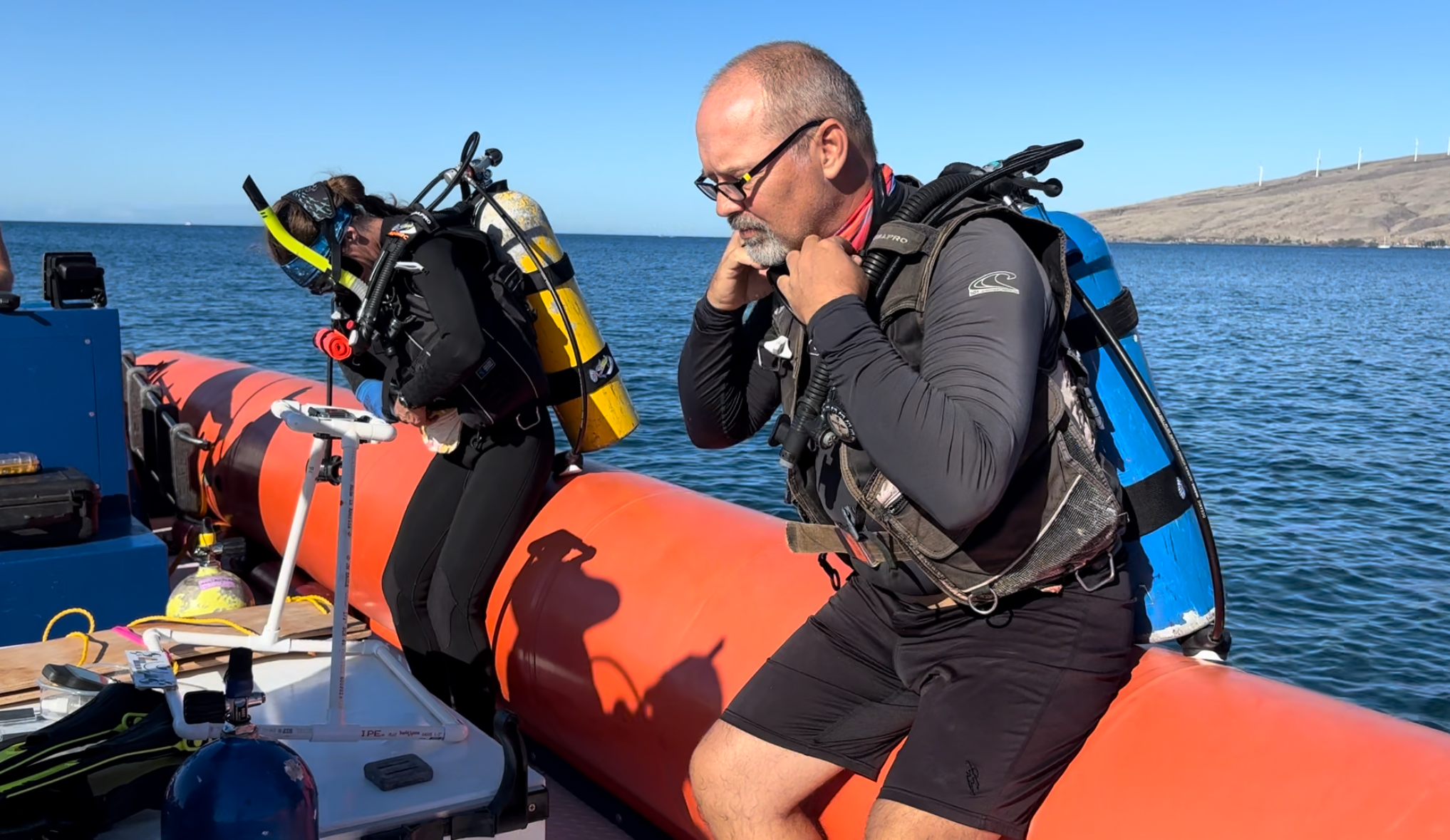
John and the MNMRC dive team perform CRAMP and FAHU reef monitoring surveys in South Maui.


You started the dive program at MNMRC. Tell us more about that.
I’ve been diving for 30 years, a dive instructor for 15 years, and a dive safety officer for (now) three organizations. I always say that when trying to understand the state of the marine environment, nothing is as effective as getting in the water and seeing things for yourself. While the ongoing impactful conservation work on the land is vital, I saw we were missing a functional understanding of the conditions in the coral reefs we wanted to improve when I arrived at MNMRC. To address that, we needed to start looking at the reefs ourselves.
While NOAA and the Department of Land and Natural Resources’ Division of Aquatic Resources (DAR) have been monitoring coral reefs throughout Hawaii for some time, there was a gap in South Maui where we are currently focused. After a couple of years of diving in the area, I can understand the survey gap as it is not an easy place to get out to survey. Kona weather and brown water during the wet season don’t provide the conditions we need for surveys, so most of our dive time takes place in the dry season when conditions are most favorable.
One of our big challenges is finding a way to make this program sustainable, and in the usual MNMRC fashion, that means looking at partnerships. We are in the process of becoming members of the American Academy of Underwater Sciences, which will allow our team to dive with DAR, the University of Hawaiʻi, NOAA and other AAUS member organizations.
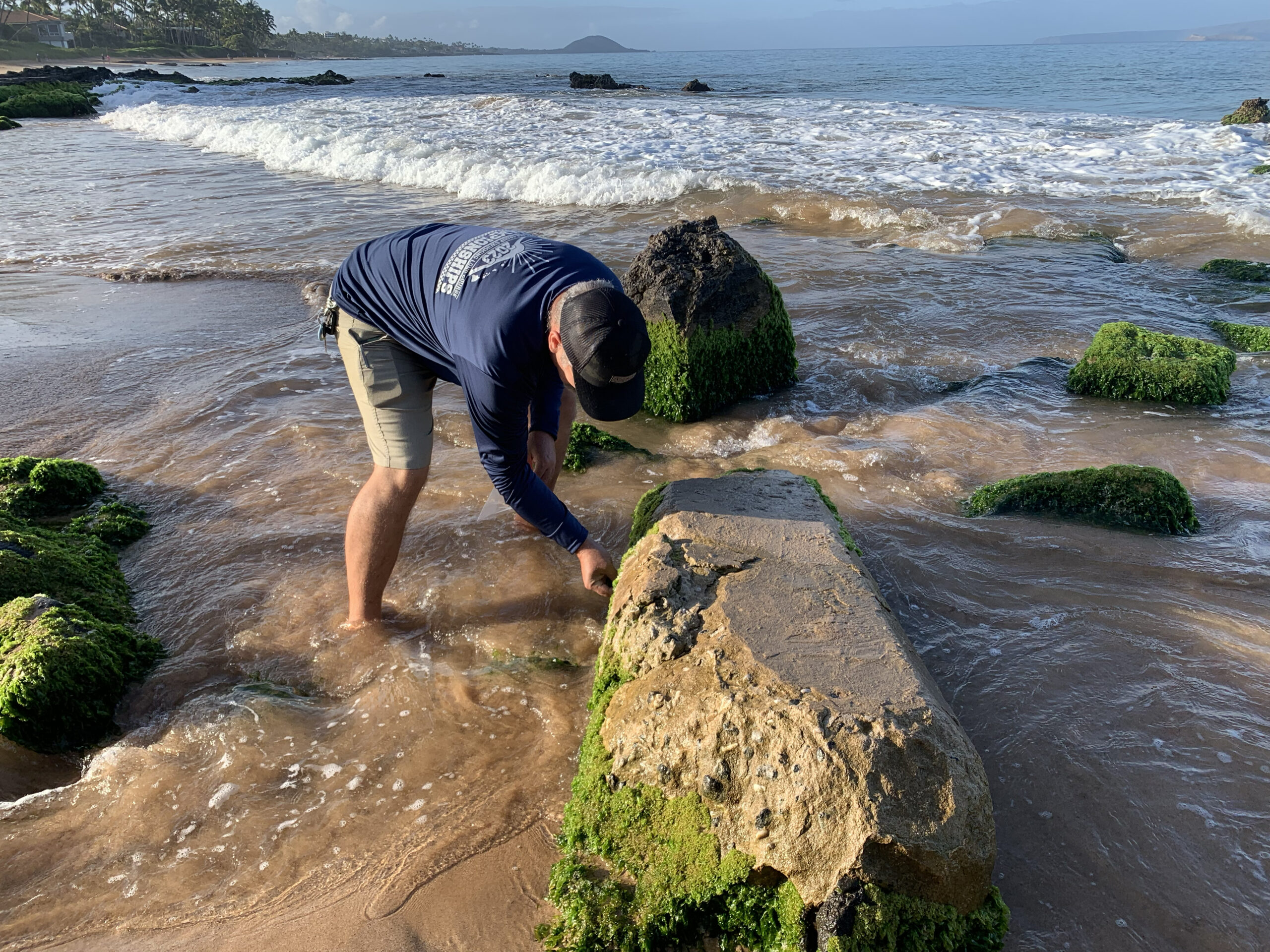
John collects limu (algae) samples at Keawakapu Beach.


 Is there one project you’re working on that really excites you?
Is there one project you’re working on that really excites you?
I’ve always been interested in “listening” to the organisms living in an area to understand the ecology of the place. What thrives (or what is missing) in an area can tell a lot about typical environmental conditions and hint at problems in the area. We’ve recently started studying the presence of nitrogen (a fertilizer) in marine algae, which helps us to trace where nutrients are coming from. Are the levels reflective of excessive fertilizer use, sewage leaks, or something else? We know groundwater picks up nitrogen from the land as it flows to the ocean. Certain marine algae (limu) like to grow near groundwater and soak up these nutrients. While the algae clues us into where groundwater is flowing, if there are large amounts of limu, this can also hint at whether there are excess nutrients too. Laboratory analysis to understand nitrogen isotope ratios can let us know if that nitrogen came from natural sources, fertilizers, or sewage.
We plan to continue annual sampling to understand whether conditions are changing at key sites. Is there an increase or decrease in the nutrient levels we’re seeing? Problems facing our reefs often originate on land, so at MNMRC, we are always looking for solutions that address land-based issues. Our Reef-Friendly Landscaping Program, for example, encourages property managers to reduce intensive industrial fertilizer use as much of these fertilizers wash away before plants can absorb them. If we identify an area with high fertilizer use, we should be able to show a reduction in coastal nitrogen runoff after a shift to organic alternatives. We want to continue to use these limu as indicators of environmental health and to directly tie this work to management actions in the future.
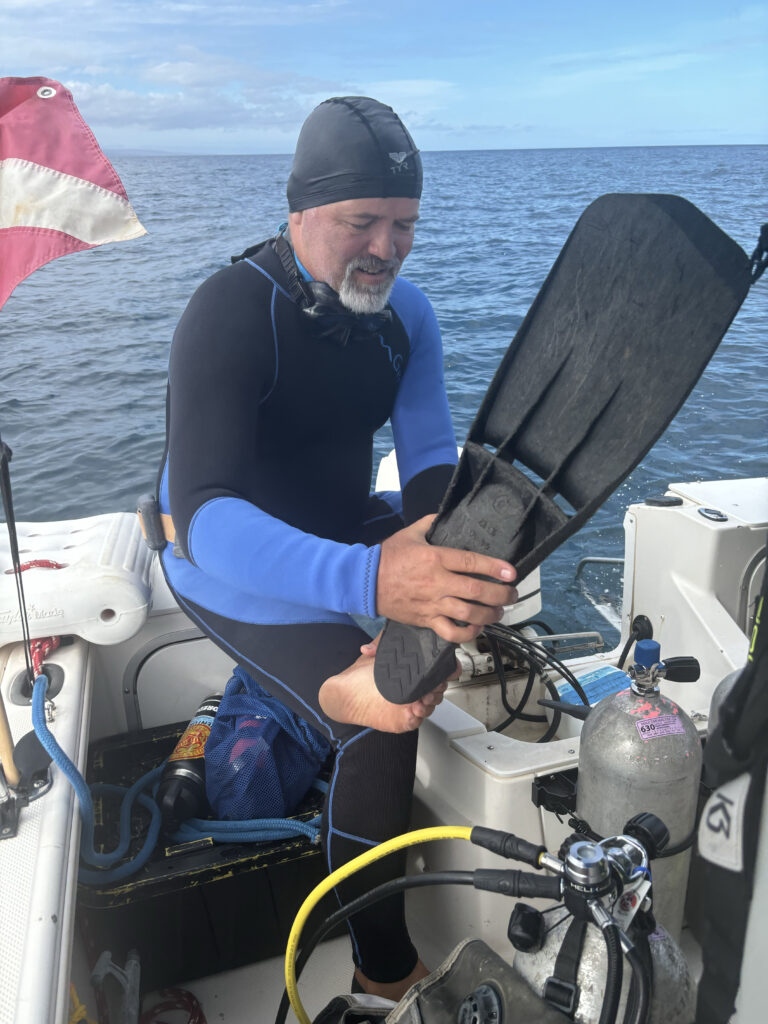
John prepares to conduct the final reef monitoring survey of 2024.
What advice can you share with us about the current environmental situation?
When it comes to our coral reefs, the combination of polluted runoff, overfishing, and climate change are the major issues causing harm. While climate change is hard to tackle as an individual, focusing on what we can directly control, like choosing to fish pono or transitioning that festering septic tank, has immense value. For example, limiting or avoiding catching or buying limu-eating fish like uhu, kala, and palani means there are more of these fish helping to maintain our reefs, keeping algae in balance, and making space for new corals to grow. I always like to focus on managing my sphere of influence.
These days, it is really easy to downplay the effect our individual actions have. I understand wanting to throw up your hands and think, “I can’t do anything about what’s happening,” but I try to say, “think about what you can do.” Each of our individual choices creates a collective effect. The more waste you pour down the drain, for example, the more it all ends up in the ground, contributing to what we see downstream and eventually in the ocean, so something as simple as waste reduction and water conservation can make a big difference at the individual level.
You also don’t have to go at it alone. My family and I volunteer our time with local conservation groups. Participating in projects like restoring wetlands, loʻi kalo, or cleaning up a beach, for example, is a great way to work with your community to make a bigger impact.
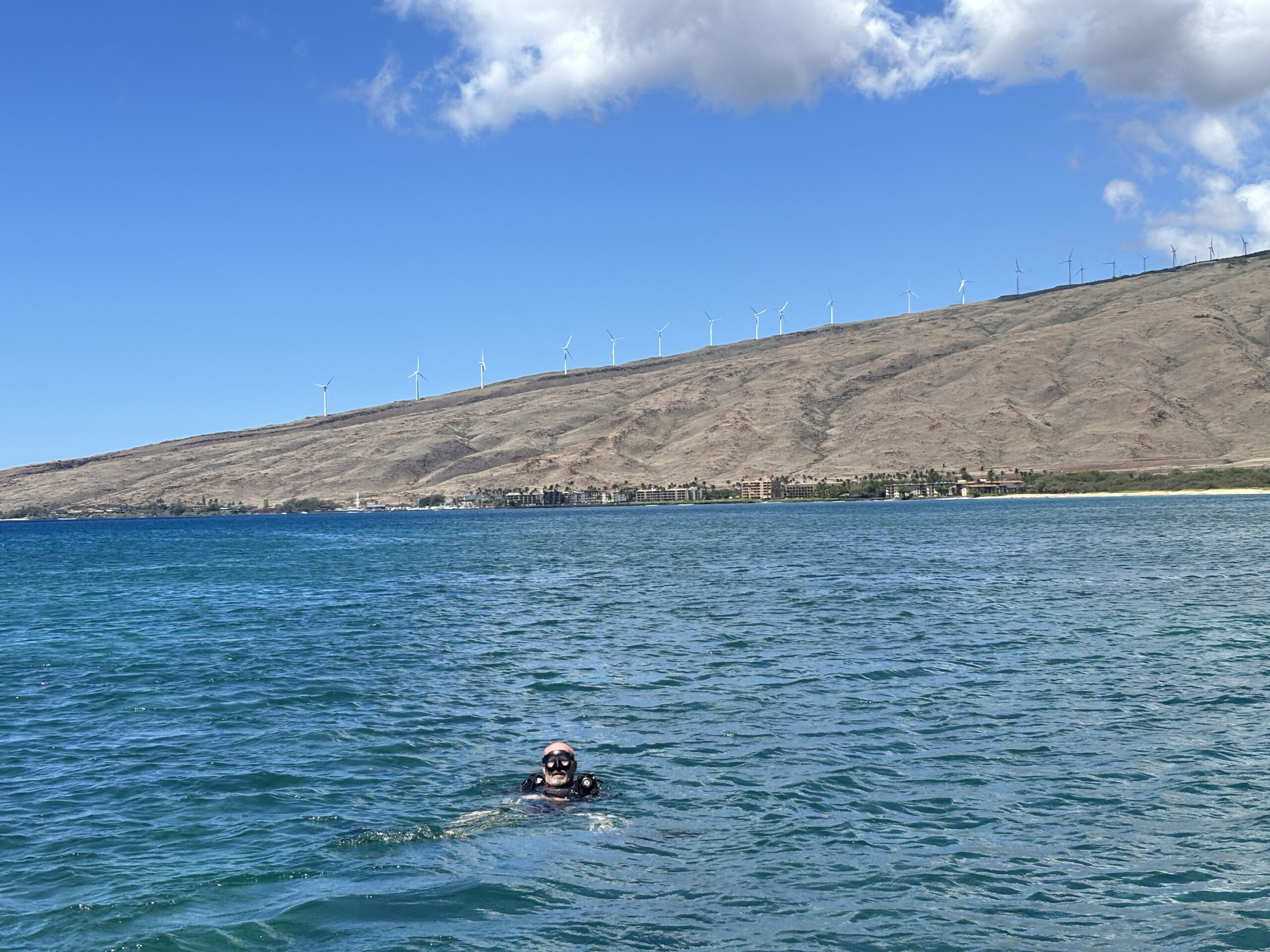
John and the MNMRC dive team looking for potential community-based coral restoration areas (CBCRA) in South Maui.
What keeps you busy outside of work?
My two daughters are competitive swimmers here in Maui, and they swim as part of the interscholastic league and at the national level. Many of my Saturdays are spent as a referee at their swim events, whistle in hand! I’m also part of the Kihei Community Association in South Maui and sit on the Infrastructure and Transportation Committee. I enjoy the chance this gives me to collaborate on finding solutions to community issues and concerns.
Any favorite food trucks or restaurants on the island you can point us towards?
I am not a food truck regular, but I always hit up Maui Fresh Streatery when they show up to an event. I enjoy their crispy garlic furikake chicken bowl, but the thing I like about this particular food truck is they like trying new stuff – and it’s always ono (delicious).
Best spot to watch a sunset?
Watching sunsets at Keoneʻōʻio Bay (La Pérouse) while fishing with the family is always a treat.



No Comments
Sorry, the comment form is closed at this time.